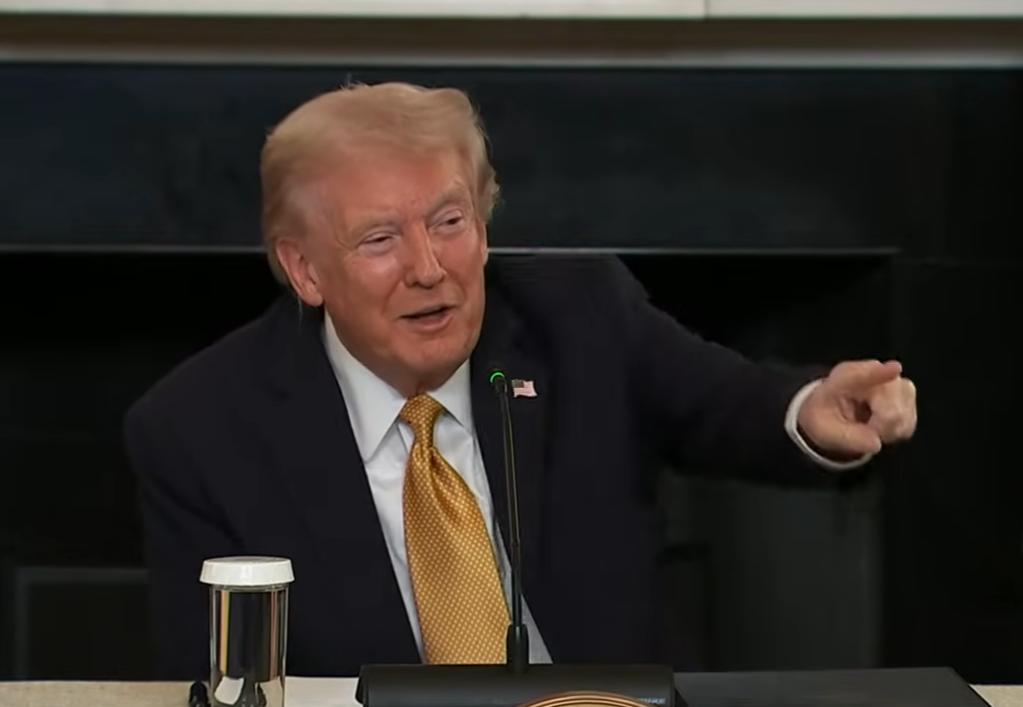There It Is – White House NEC Director Kevin Hassett Notes Something VERY Important
White House Chair of the National Economic Council (NEC), Kevin Hassett, walked out to the press pool to discuss the latest excellent inflation figures from the Bureau of Labor Statistics today {BLS REPORT HERE}. However, the insufferable press pool wanted to talk about other things.
I’ll get to the BLS data below – with a gold nugget just for you, don’t share it. But first, NEC Director Hassett also let something slip in his responsive comments that most will miss.
When asked about Trump’s decision to terminate all trade negotiations with Canada, Hasset noted the discussions were frustrating, and “The Canadians were very difficult to negotiate with.” Then comes the key point (03:28), “The fact that we are now negotiating with Mexico, separately, reveals that it’s not just one add, there’s frustration that has built up.”
What Hassett just confirmed again, as if we needed more evidence, is that the trilateral trade agreement -the USMCA- is not going to exist once Trump opens it up for renegotiation. The USA team is already working on a separate bilateral trade agreement between the USA and Mexico, proactively. The USMCA is dead – we just have not made it official yet. WATCH (prompted):
On the inflation data, the September inflation rate was 0.3 percent, much lower than all economists and pundits predicted. The tariffs are having no impact on the rise of consumer prices. In fact, the sectors with the most imported goods are the sectors with the lowest inflation.
To pull out an example, look at the apparel sector. Apparel is dominantly an imported product category, coming from China and Southeast Asia textile manufacturing factories. The apparel sector is 0.7 overall, with many of the sub-sectors significantly lower – See Table-2
To drive home the point, look at detailed TABLE-2 HERE: furniture, electronics, toys, cell phones, appliances etc. the highest imported goods sectors are all running negative inflation rates; meaning, consumer prices are factually lower even with the global tariffs in place. Imported products are NOT causing inflation; in fact, their prices are dropping.
Just like 2018 and 2019, tariffs on imported goods do not drive up consumer prices, particularly when those tariffs are connected to policy that lowers overall energy prices – transportation and shipping costs lowered. The producing countries are offsetting the tariff rates by lowering the wholesale prices.
♦ Now, a golden nugget for consideration later. Combine the value of what we import from Canada with the conversations that President Trump has had with Russian Federation President Vladimir Putin. Elevate your thinking, and overlay the U.S. withdrawing operational support with the NATO alliance.
Now think about those icebreakers that President Trump has ordered from Finland, and the policy initiatives within the trade agreements that are going to build arctic fleets of USA ships to ensure navigation. Russia is the closest country to the USA, and Russia has exponentially more of the same valuable raw materials that we import from Canada.
Trump is ending the USMCA. Trump has discussed a post-Ukraine war relationship with Putin. Canada is cozying up to China and the EU, and Trump has ordered icebreakers to operate in the region between the USA and Russia. Who has the largest consumer market, and who has the largest capacity to deliver raw materials in a strategic relationship based on trade. Things look a little different now?
We keep watching.






Post a Comment